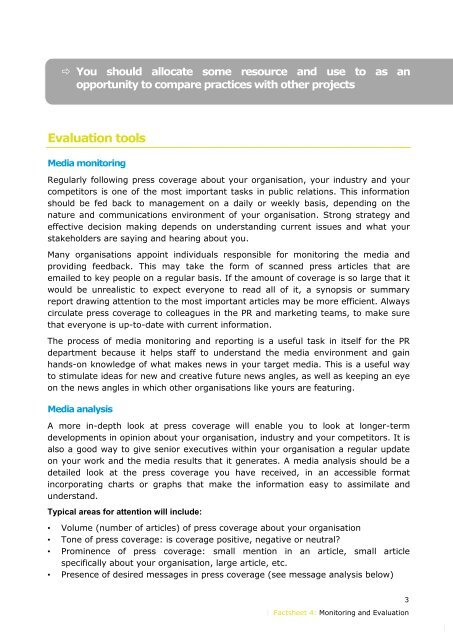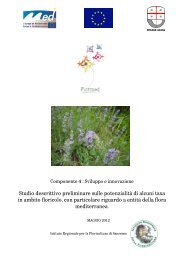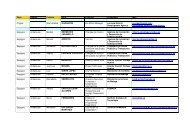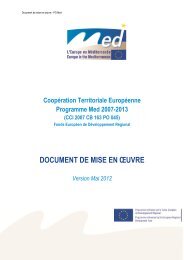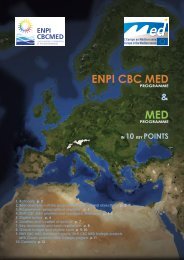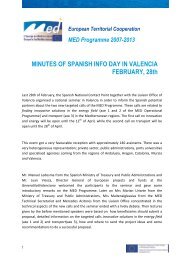MED Communication Handbook - Programme Med
MED Communication Handbook - Programme Med
MED Communication Handbook - Programme Med
You also want an ePaper? Increase the reach of your titles
YUMPU automatically turns print PDFs into web optimized ePapers that Google loves.
� You should allocate some resource and use to as an<br />
opportunity to compare practices with other projects<br />
Evaluation tools<br />
<strong>Med</strong>ia monitoring<br />
Regularly following press coverage about your organisation, your industry and your<br />
competitors is one of the most important tasks in public relations. This information<br />
should be fed back to management on a daily or weekly basis, depending on the<br />
nature and communications environment of your organisation. Strong strategy and<br />
effective decision making depends on understanding current issues and what your<br />
stakeholders are saying and hearing about you.<br />
Many organisations appoint individuals responsible for monitoring the media and<br />
providing feedback. This may take the form of scanned press articles that are<br />
emailed to key people on a regular basis. If the amount of coverage is so large that it<br />
would be unrealistic to expect everyone to read all of it, a synopsis or summary<br />
report drawing attention to the most important articles may be more efficient. Always<br />
circulate press coverage to colleagues in the PR and marketing teams, to make sure<br />
that everyone is up-to-date with current information.<br />
The process of media monitoring and reporting is a useful task in itself for the PR<br />
department because it helps staff to understand the media environment and gain<br />
hands-on knowledge of what makes news in your target media. This is a useful way<br />
to stimulate ideas for new and creative future news angles, as well as keeping an eye<br />
on the news angles in which other organisations like yours are featuring.<br />
<strong>Med</strong>ia analysis<br />
A more in-depth look at press coverage will enable you to look at longer-term<br />
developments in opinion about your organisation, industry and your competitors. It is<br />
also a good way to give senior executives within your organisation a regular update<br />
on your work and the media results that it generates. A media analysis should be a<br />
detailed look at the press coverage you have received, in an accessible format<br />
incorporating charts or graphs that make the information easy to assimilate and<br />
understand.<br />
Typical areas for attention will include:<br />
• Volume (number of articles) of press coverage about your organisation<br />
• Tone of press coverage: is coverage positive, negative or neutral?<br />
• Prominence of press coverage: small mention in an article, small article<br />
specifically about your organisation, large article, etc.<br />
• Presence of desired messages in press coverage (see message analysis below)<br />
� Factsheet 4: Monitoring and Evaluation<br />
3<br />
�


